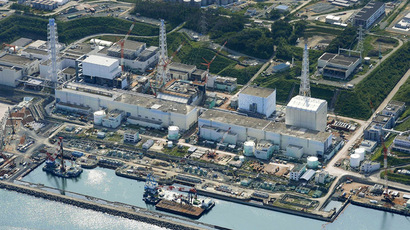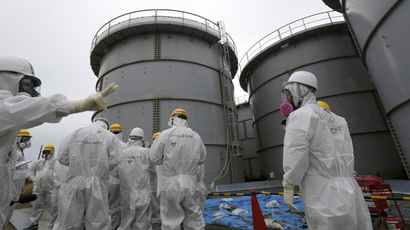Plumes of mysterious steam rise from crippled nuclear reactor at Fukushima

Fresh plumes of most probably radioactive steam have been detected rising from the reactor 3 building at the crippled Fukushima nuclear plant, said the facility’s operator company.
The steam has been detected by surveillance cameras and appeared
to be coming from the fifth floor of the mostly-destroyed
building housing crippled reactor 3, according to Tokyo Electric
Power Co (TEPCO), the plant’s operator.
The steam was first spotted on December 19 for a short period of
time, then again on December 24, 25, 27, according to a report
TEPCO published on its website.
The company, responsible for the cleanup of the worst nuclear
disaster since Chernobyl, has not explained the source of the
steam or the reason it is rising from the reactor building. High
levels of radiation have complicated entry into the building and
further inspection of the situation.
Three of the plant’s reactors suffered a nuclear meltdown in
March 2011 after the Great East Japan Earthquake and resulting
tsunami hit the region. The plant is comprised of six separate
water boiling reactors. At the time of the earthquake, reactor
number 4 had been de-fueled and reactors 5 and 6 were in cold
shutdown for planned maintenance, thereby managing to avoid
meltdowns.
Unlike the other five reactors, reactor 3 ran on mixed core
containing both uranium fuel and mixed uranium and plutonium
oxide, or MOX nuclear fuel. The Reactor 3 fuel storage pond still
houses an estimated 89 tons of the plutonium-based MOX nuclear
fuel composed of 514 fuel rods.
In a similar incident, small amounts of steam escaped from the
reactor 3 building in July 2013, Asahi Shimbun reported. However
it was unclear where the steam came from. TEPCO said that
radiation levels did not change, adding that the steam could have
been caused by rain that found its way to the primary containment
of the reactor, and because this vessel was still hot, the water
evaporated. On 23 July the steam was seen again coming out of the
fifth floor just above the reactor containment, the Japanese
newspaper reported.
In November, TEPCO, responsible for the decommissioning of the
plant, began the highly risky removal of over 1,500 potentially
damaged nuclear fuel rods from reactor 4. The reactor is the most
unstable part of the plant as it was offline at the time of the
2011 catastrophe and its core didn't go into meltdown. Instead,
hydrogen explosions blew the roof off the building and severely
damaged the structure.One of the most dangerous operations
attempted in nuclear history was a success as a total of 22
assemblies containing 50 to 70 fuel rods have been transported to
a new storage place.
While the extraction of the fuel rods is a significant challenge
for TEPCO, a more complex task of removing the cores of the
stricken reactors is yet to come.














